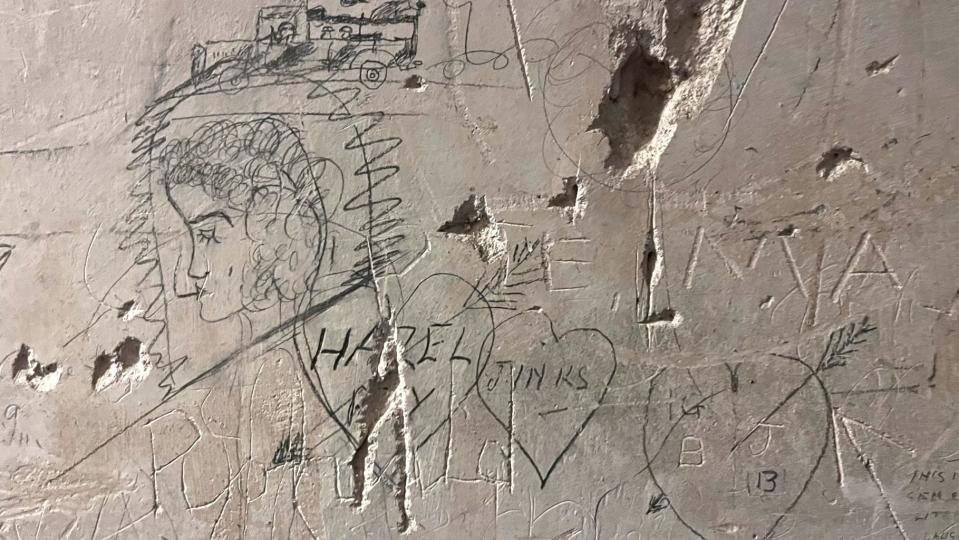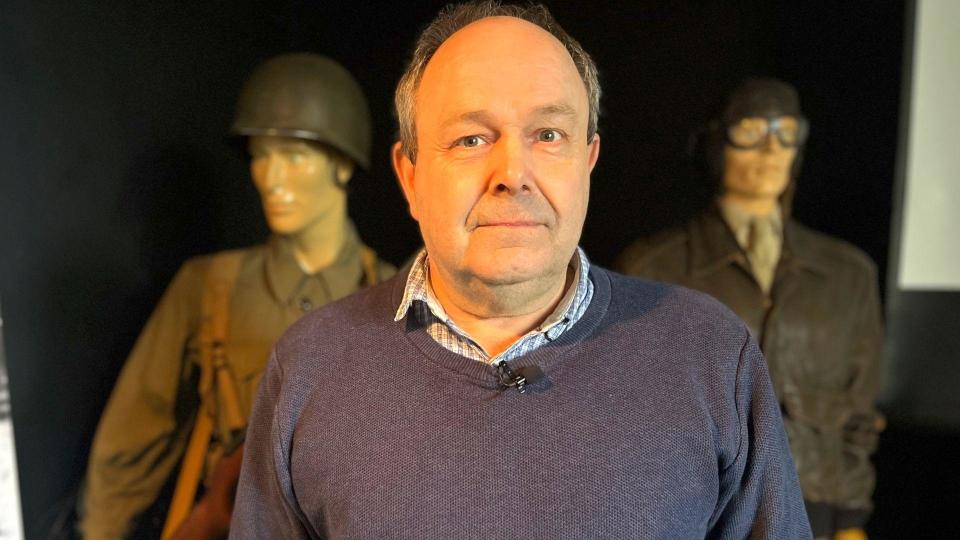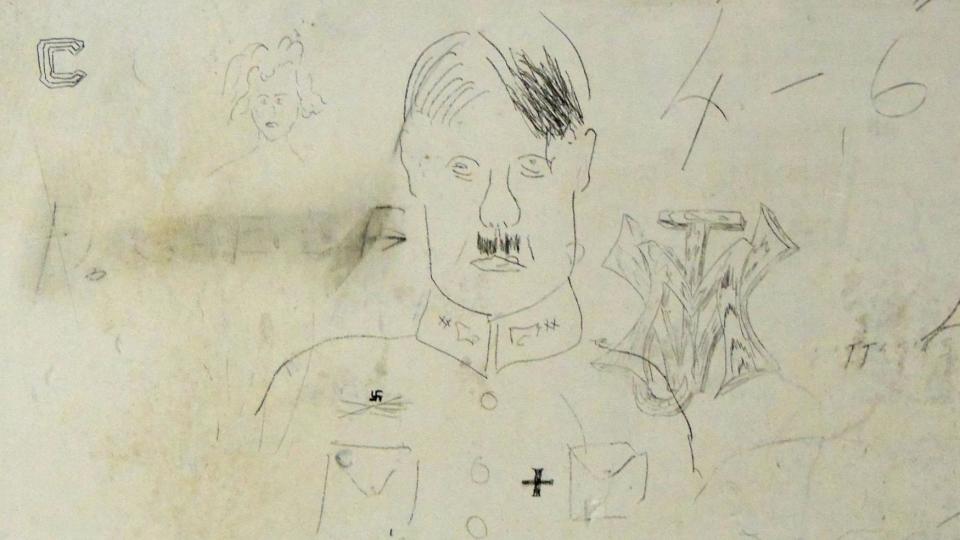The American D-Day soldiers who left messages in a castle
Hidden down a dark cellar in the bowels of a centuries-old castle is one of Northern Ireland’s best kept World War Two secrets.
For 80 years, its basement walls have been the canvas for hundreds of hand-written messages from American soldiers preparing for D-Day.
From December 1943 to February 1944, Killymoon Castle just outside Cookstown played a key role in the war effort.
It was the base for the 505th Parachute Infantry Regiment of the US Army.

The GIs in NI
Until 1942, the British had been facing off against Nazi Germany without their greatest ally.
The bombing of Pearl Harbour changed all that and the first arrival of American troops to the British Isles began to gather haste between 1943 and 1944.
It is estimated that about 300,000 American military personnel were deployed to Northern Ireland by the end of the war.
More than 600 American army personnel were stationed at Killymoon Castle.
Many of them were part of an elite parachute unit that would play a key role in the war.
They spent three months at Killymoon Castle before being dispatched to England for the final preparations of the operation to land in France, that would forever be known as D-Day.
By the end of World War Two, 153 paratroopers who stayed at Killymoon had died.
'It's a piece of history'
But the American soldiers that stayed in the rural County Tyrone castle left their mark in more ways than one.
Clarke Hill is a local historian who has helped bring the story of the American GIs and Killymoon Castle to life.
"When people come to the castle and I tell them the history, they can’t believe it," he said.
"There are still lots of artefacts from their time here that can be found in the castle, including handbooks that the American soldiers had as a guide to Northern Ireland.

"There are, of course, many wonderful pictures from that time too, including the troops playing baseball on the front lawn of the castle."
Officers and senior US Army personnel stayed in the warmth of the castle and many of the rooms have now been restored to how they would have looked during this era.
The rest of the American troops stayed in makeshift huts that were erected on the castle grounds, the remnants of which can still be found today.
The cellars of the castle played host to a prison cell, a mess room and an armoury.
Killymoon's owners have left these rooms virtually untouched, allowing handwritten messages left by US troops to survive for eight decades.
Mr Hill added: "These walls are a hidden gem and the messages left really are an incredible part of history."
The cellar walls consist of hundreds of messages scrawled in pencil from the soldiers who called Killymoon their home during this era.
The handwritten messages include, names, dates of birth and regiment details as well as caricatures.
The wall even features a pencil drawing of Adolf Hitler.

One of the names on the wall reads: "P.T – Tony J. Vickery 505 Prcht. Inf, U.S. Army, Atlanta, GA".
The incredible story behind this name was unearthed by local World War Two enthusiast, Andy Glenfield.
"I have been to many World War Two connected sites in Northern Ireland, but I’ve never come across anywhere like Killymoon,” he said.
The milk bar commando
"When I went into that cellar basement and saw all those names, I was absolutely flabbergasted, I couldn’t believe they were all still there.
"The reason Tony Vickery’s name stood out for me is because he had given so much detail about himself, so that gave me a lot to go on in terms of researching his story."
Andy was able to find out that Tony Vickery had been part of the parachute regiment in the 82nd Airborne Division and was only 18 when he stayed at Killymoon.
He also uncovered documents showing that the men in his company had called him “the milk bar commando” because of his love of milkshakes.
The Georgia native had qualified as a fourth-grade technician and parachuted into Normandy on 6 June 1944.
Five days later he was providing cover while other soldiers in his group were sleeping and a group of Germans advanced to their position.
A firefight ensued and Tony Vickery was killed in action.
He was awarded the purple heart and is buried in the American Cemetery at Colleville-sur-Mer in Normandy.
'I'm proud of him'
After pulling together the details of Tony Vickey’s story, Andy Glenfield decided to visit his grave in France.
He said: "When we were there, our guide had a little silver bucket with sand from Omaha Beach and he took the sand and wiped it into the white marble cross onto Tony’s name, and it made it stand out gold. It was wonderful.
"It was amazing to see his final resting place after learning so much about him, from Cookstown to Normandy, it was very emotional."
Andy then tracked down some of Tony Vickey’s relatives in America to let them know about the details he had uncovered.
BBC News NI spoke to his niece, Nancy McKendree, who is now 80 years old and lives in the US state of Georgia.
She said: "I was an infant when he was killed, but I know that my mother stayed upset about his death all her life.
"She would never watch a war picture, either on TV or at the movies, it was too difficult."
She added: "Until recently I didn’t know anything about his name in the castle.
"All I knew was that he was a war hero, and I was sad, of course, but I’m proud of him for what he did while he was over there."
Killymoon Castle has opened its doors to the public and local schools this weekend to commemorate D-Day with tours, an exhibition and displays of original World War Two memorabilia connected to the site.


